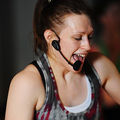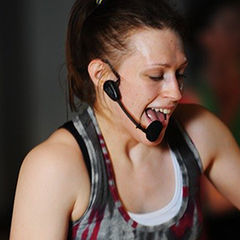When you need the convenience of an at-home workout, YouTube is overflowing with options. A quick search for the type of exercise you want to do and length (e.g., barre, 20 minutes) leads to dozens or even hundreds of videos. However, the ease of finding a workout contrasts with the need to watch for red flags regarding exercise safety, quality of the workout and tone of workout messages.
Exercise Safety
When following an at-home exercise video, no one is checking on your form and offering specific suggestions for safety. The person leading the workout should include exercise modifications and it’s important that you do what feels right for your body and fitness level. You can also look for workouts that include additional people in the video who are demonstrating the modifications.
Quality of the Workout
On YouTube, anyone can post an exercise video, qualified or not. Check the YouTuber’s channel information. If they have qualifications, they will likely display this information. Certifications, such as those from ACE, ensure the person leading the class has met an expected level of competence for that certification. If you would like to verify the instructor’s credentials you can do so by visiting the US Registry of Exercise Professionals
Another way to determine the quality of a workout is the class design. It is standard practice for exercise classes to have a warm-up, main workout, cool-down and stretch. However, it is common for YouTube videos to get straight to the main workout without the other components or have abbreviated versions of these components. There are, however, some easy fixes for this:
- If there is not a warm-up, pause the video and march in place for the length of a song (3-5 minutes). Remember, the purpose of the warm-up is to prepare the body for the more intense activity to follow. Make sure the warm-up adequately prepares you for the main work-out.
- If you do not feel ready for the main workout after the warm-up, restart the video to repeat the warm-up. For example, if the warm-up lasts 30 seconds and the next move is burpees, pause the video and keep going with the warm-up.
- If there isn’t a cool-down or you feel your heart rate is too high after the main workout, repeat some of the exercises in the main workout, but at a lower intensity. For example, if you were lunging forward, side and back, you can change those to toe taps forward, side and back. The cool-down should mirror the warm-up and be of equal duration and intensity.
- If there isn’t a stretch component, consider the muscles worked in the video. Did you do a lot of push-ups? Stretch your chest. Squats? Stretch the glutes, quadriceps, and hamstrings. The ACE Healthy Living Blog includes a wide range of articles with pictures on how to stretch a variety of muscles.
Ultimately, listen to your body and keep moving even if the exercise in the video is not working for you because it is to complicated or painful you can do an exercise swap and continue your workout with a move of your choice that is more enjoyable. Another red flag to watch for is up/down/up/down movement, where one exercise is completed standing and the heart rate elevates, followed by an exercise on the floor and then another standing exercise. Repeatedly going up and down can cause dizziness so avoid this type of movement. Exercises should gradually move from up to down or down to up over the course of the video.
Tone of Workout Messages
The person leading the workout has the ability to influence the viewer of the video, which is why the instructor’s words are important to note. Is the person leading the video motivating and inspiring or belittling and body shaming? You should feel good when you move your body so click to another video if needed.
Also, be aware of product promotion. Many YouTubers get video sponsorships to promote a product as a source of income. Product promotion is not necessarily good or bad, but it may influence the messages you hear. For example, you shouldn’t be told you need a specific product to perform a certain exercise when it is not needed.
Checklist for YouTube workout videos to watch:
- Warm-up: Heart rate gradually increases
- Main workout: Logical sequence of exercises; gradually move from up to down or down to up over the course of the video; not up/down/up/down for each exercise; enjoyable
- Cooldown: Heart rate gradually decreases
- Stretch: Muscles used in the exercises are stretched; range of motion is addressed
- Instructor: Uses positive/motivating language; provides exercise modifications
As in real life, there will be YouTube instructors you connect with and others you simply don’t. Cue up several videos you would like to try—if you don’t connect with the first video, you have another lined up and workout time is not wasted trying to find another video.
While working out with a certified exercise professional is ideal, being able to spot red flags when working out at home with YouTube can alert you when to click away or find ways to improve your workout.




 by
by 





 by
by